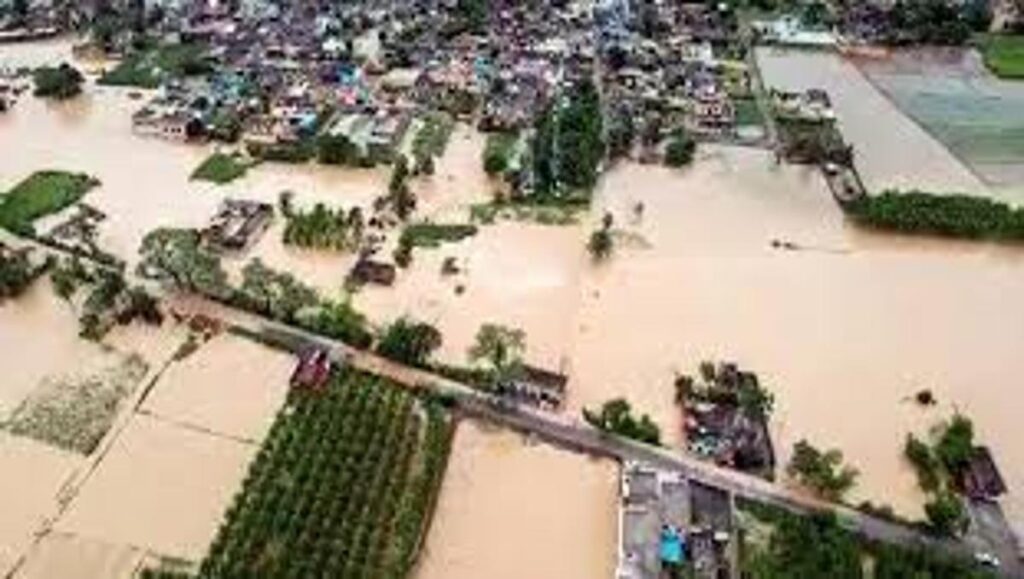
The Punjab government has officially declared all 23 districts flood-hit, with widespread devastation affecting lakhs of people across the state. As per state data, more than 3.5 lakh residents have been impacted by the deluge, while 30 lives have been lost so far.
Rising Water Levels Trigger Statewide Flood Crisis
Heavy rainfall, overflowing rivers, and full-to-capacity reservoirs have pushed Punjab into a state of emergency. Floodwaters have inundated 1,400 villages, forcing over 20,000 people to move out of their homes. Crops across vast agricultural land have been submerged, adding to farmers’ woes.
The worst-affected districts include Gurdaspur, Mansa, Amritsar, Kapurthala, Ferozepur, Tarn Taran, and Hoshiarpur, where thousands are still struggling with waterlogging, damaged infrastructure, and disrupted connectivity.
Government Response and Leadership Visits
Chief Minister Bhagwant Mann and Governor Gulab Chand Kataria visited flood-hit regions to assess the situation. Mann travelled to Ferozepur in a boat to meet affected residents, while Kataria reviewed the situation in Ferozepur and Tarn Taran.
CM Mann expressed concern about the low compensation norms set by the Centre for natural disasters. He demanded a revision in relief packages and reiterated the state’s request for the release of ₹60,000 crore in pending funds from the Union Government. He clarified that Punjab was seeking its due rights rather than “begging” for assistance.
Governor Kataria interacted with farmers in border villages, who have been demanding ownership rights to their land to qualify for government compensation schemes. Kataria assured them that the issue would be brought to the state government’s attention for consideration.
Relief Efforts and Rescue Operations
According to Cabinet Minister Hardeep Singh Mundian, multiple agencies, including the National Disaster Response Force (NDRF), the Army, and the Border Security Force (BSF), are involved in ongoing rescue and relief efforts across Punjab. He said that boats, helicopters, and ground teams are being deployed to evacuate stranded families and deliver food, clean water, and other essentials to affected villages.
Mundian further stated that the state health department has increased services in flood-hit regions. Medical teams have been sent to provide emergency care and prevent disease outbreaks, while temporary camps are being set up in relief shelters to ensure proper treatment for displaced families.
Massive Crop Damage Across Punjab
The floods have caused severe agricultural losses, with officials estimating damage to over 1.4 lakh hectares of standing crops. Key crops such as paddy, cotton, and maize have been destroyed in low-lying areas, leading to huge financial setbacks for farmers.
Farmers’ unions have urged both state and central governments to announce special compensation packages and loan waivers to ease the burden. Agriculture being the backbone of Punjab’s economy, the impact of the current flood crisis is expected to have long-term consequences.

The Way Forward
The Punjab floods highlight the urgent need for better disaster preparedness, river management, and stronger infrastructure to protect both lives and livelihoods. The state continues to push for more relief support from the Centre while carrying out large-scale evacuation, medical, and rehabilitation drives.
As Punjab battles this crisis, the resilience of its people and timely government intervention will play a crucial role in overcoming the challenges ahead.


Pingback: Delhi Weather Today: Heavy Rain Causes Waterlogging And Flight Disruptions In NCR » Trendbabaa